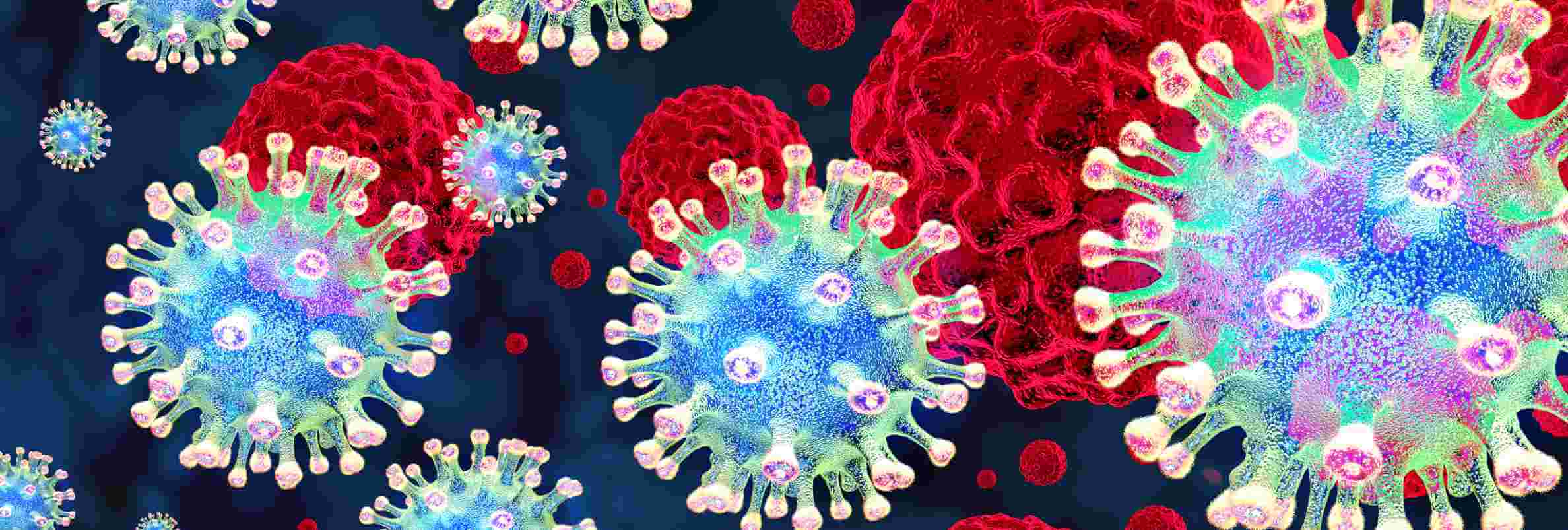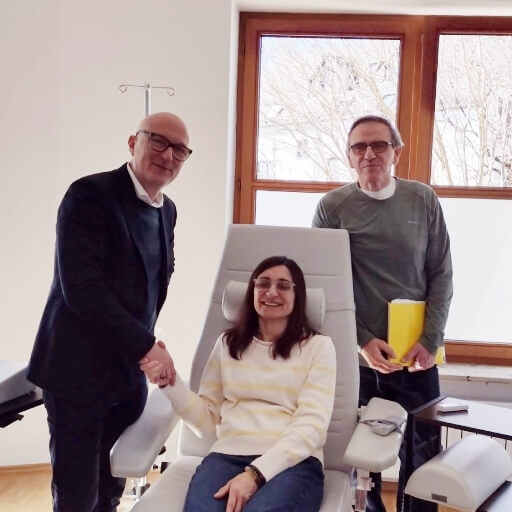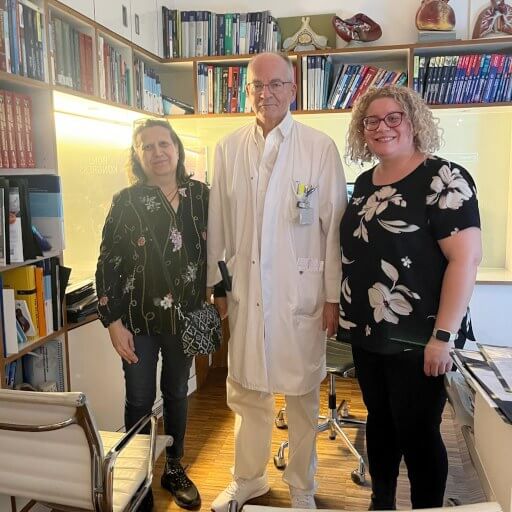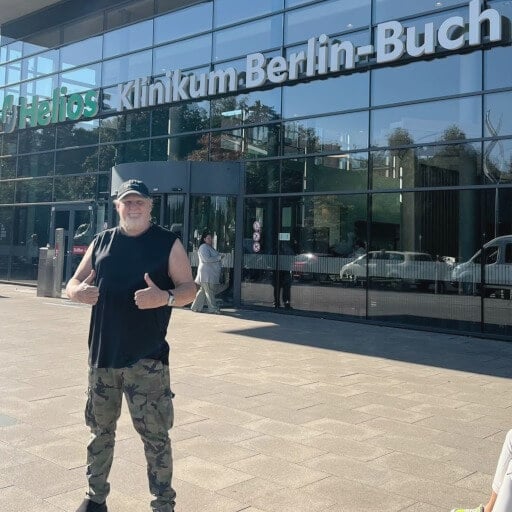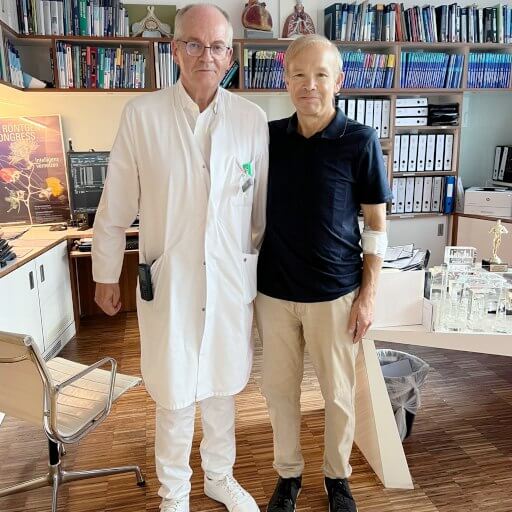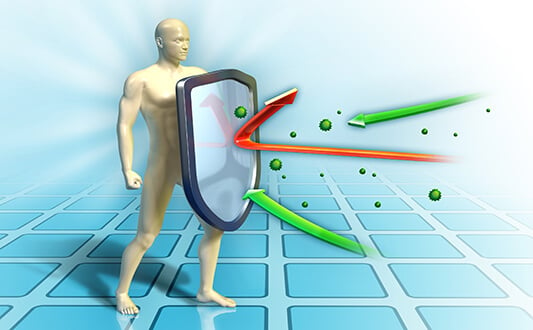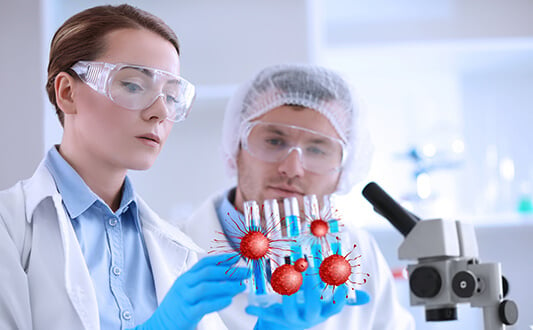Oncolytic virotherapy is an innovative cancer treatment that utilizes viruses to selectively infect and destroy cancer cells while simultaneously stimulating a systemic antitumor immune response. Since its emergence as a form of immunotherapy, oncolytic virotherapy has rapidly gained relevance in oncology. In 2015, the FDA approved Imligic for melanoma treatment, which is considered a significant milestone in the field. Since then, oncolytic viruses have been increasingly used in clinical settings and are being explored for the treatment of various types of cancer, including glioblastoma, liver cancer, and head and neck tumors.
Newcastle disease virus
Doctors in Germany successfully use a drug based on the Newcastle disease virus (NDV) as a form of oncolytic virotherapy (an avian paramyxovirus-1), which is harmless to humans. Antitumor agents based on this virus began to be developed back in the 1960s of the twentieth century. At that time, the virus had not yet been introduced into the human body, but with its help an oncolysate was created (fragments of a destroyed malignant tumor that were used to stimulate the immune response). This laid the foundation for oncolytic virotherapy as immunotherapy, demonstrating how viruses can stimulate the body’s immune system to target cancer cells.
In 1971, Csatary described a unique clinical case: in a farmer with aggressive colon cancer, the tumor suddenly disappeared along with all its metastases. The author of the publication suggested that this was not a miracle at all, but the result of an accidental infection of the patient with NDV from birds. The tumor began to regress just after an outbreak of Newcastle disease on his farm. As a result, interest in this virus on the part of scientists increased sharply, which led to the development of drugs for oncolytic virotherapy for cancer.
How Does the NDV Oncolytic Virus Work?
NDV oncolytic virotherapy works through the following two mechanisms:
- Infection of a malignant tumor and destruction of cancerous cells due to a direct cytopathic effect
- Induction of an antitumor immune response
Once introduced into the human body, the virus attacks only tumor cells and destroys them. Healthy tissues are, therefore, not affected. What is oncolytic virotherapy and why is NDV so effective? The selective effect can be explained by the following features:
- Structural features of cancer cells. Their surface contains too many glycoproteins rich in sialic acid. The latter becomes the target for the virus: NDV destroys sialic acid, thereby destroying the cancer cell. Interestingly, the virus has a stronger effect on more aggressive tumors. This is due to the fact that the amount of sialic acid determines the tumor's ability to spread metastasis. Overexpression of sialic acid creates a negative charge on the membrane. It provokes intercellular "shocks", thereby pushing cancer cells into the bloodstream.
- Enhancing antitumor immunity. How does it work? First, as a foreign agent, NDV itself enhances the activation of the immune system. Second, sialic acid, found in cancer cells, plays a role in immune evasion. Under its thick "layer" are hidden antigens that go unnoticed by the immune system. After the introduction of the virus, these antigens become "naked". Immune cells recognize them, so the enhancement of the systemic antitumor immune response occurs.
For What Cancers Can NDV Be Used?
Doctors are trying to use oncolytic virotherapy for the treatment of many oncological diseases. Dozens of studies have been completed, are ongoing, or are planned to evaluate the efficiency of NDV for a variety of tumors. Some of them showed good results, for example:
- Glioblastoma: introduction of the virus allowed for the long-term survival of patients with an aggressive brain tumor (pilot research by Steiner H.H. et al.).
- Head and neck tumors: improvement of patient survival rates (Herold-Mende C.).
- Melanoma: improvement of patient survival rates (Niu Z.), demonstrating the promise of oncolytic virotherapy as immunotherapy for this highly metastatic cancer type.
- Kidney cancer: an objective response to therapy has been achieved; this means a shrinkage in tumors by more than 30% according to imaging diagnostics (Pecora A.L.).
- Liver cancer: an objective response to treatment was achieved (Wu Y.), demonstrating the versatility of NDV in treating different cancer types.
Many more diseases have been successfully treated in experiments on laboratory animals. For example, preclinical research has demonstrated the high efficiency of oncolytic virotherapy for lung cancer and rectal cancer. These experiments showed that the virus not only destroys the tumor but also develops immunological memory, which protects against the relapse of the disease.
Dendritic Cells Plus an Oncolytic Virus
Some hospitals in Germany have started using NDV together with dendritic cells to improve the efficiency of oncolytic virotherapy. Dendritic cells are antigen-presenting immune cells. Their task is to capture the antigen, "disassemble" it into fragments, and demonstrate it to T cells in order to trigger a cellular immune response. T cells are not able to recognize native (whole) antigens.
Dendritic cells are used in oncology without viruses as well. They are obtained from the patient's blood and treated with tumor antigens, after which specialists stimulate their maturation and then introduce them into the body. This method aligns with the definition of oncolytic virotherapy, which leverages the immune system to target and destroy cancer cells.
Doctors in Germany combined two treatment methods. NDV and dendritic cells do not simply add up their effects but significantly enhance each other's effects. Oncolytic virotherapy is used as an adjuvant for dendritic cell vaccines because it enhances the immune response. In turn, dendritic cells help viruses find tumors better and attach to cancer cells throughout the body.
The combination of oncolytic virotherapy and dendritic cell vaccine therapy can be used in two different ways:
- The first is the sequential introduction of the virus, followed by dendritic cell injections.
- The second is the infection of dendritic cells by the virus even before its introduction into the body. This method is being explored as a potential solution to overcome some disadvantages of oncolytic virotherapy, such as the immune clearance of the virus before it reaches the tumor site.
We can see the first example of use in Leipzig, Germany. The development of the DeltaVir vaccine is ongoing there. This option of oncolytic virotherapy has already proven itself to be effective for some tumors. For example, Ilett E.J. described a case of long-term remission in a patient with end-stage prostate cancer and multiple bone metastases. As more clinical trials are conducted, this combination approach may be approved for a broader range of cancers.
Other Viruses Used in Oncolytic Virotherapy
Currently, only three viruses are acknowledged as effective for oncolytic virotherapy and approved for clinical use, that is, they are part of standard cancer treatment in certain countries, such as:
- Oncorine, China
- Rigvir, Latvia
- Imlygic, the USA
These viruses have been integrated into oncolytic virotherapy for cancer, providing new treatment options for patients with various malignancies. However, the field of oncolytic virotherapy continues to evolve, with a significant number of viruses under investigation. These are, for example, Pexa-Vec, Reolysin, PVSRIPO, CAVATAK, and others. Their progress could potentially expand the oncolytic virotherapy market as they gain regulatory approval.
At present, drugs for oncolytic virotherapy are created based on the following viruses:
- Poxviridae: These are large DNA viruses, some of which may cause diseases in humans. The weakened strains of the vaccinia virus are applied to use the vaccine.
- Herpesviridae: These are viruses in the herpes family. There are eight types in total. The peculiarity of the virus is that once it enters the body, it remains there forever. Genetically modified herpes viruses types 1 and 2 are used for the creation of drugs for cancer.
- Parvoviridae: Parvoviruses are small DNA viruses without a lipoprotein envelope. One of them has natural oncolytic properties, namely the RA-1 virus. The NS1 protein is involved in the destruction of cancer cells.
- Adenoviridae: More than 50 serotypes of adenoviruses are known. They are not used in their natural form but are used by scientists as viral vectors for the development of oncolytic drugs.
- Rhabdoviridae: These include 13 genera of RNA viruses that are weakly pathogenic or non-pathogenic to humans. The virus blocks the division of tumor cells and causes their apoptosis. In clinical and preclinical studies, good results have been achieved in the treatment of gliomas, lung cancer, colon cancer, and stomach cancer.
- Paramyxoviridae: The measles virus is from this family. Some strains obtained in the laboratory can interact with the CD46 protein, which is very abundant in leukemia cells and in some adenocarcinomas.
- Reoviruses: These are recognized as effective against mutations in the KRAS gene. A Canadian phase 2 study showed improved survival rates in patients with metastatic breast cancer when oncolytic virotherapy was included in the treatment regimen.
Challenges and Limitations of Oncolytic Virotherapy
Although the success of oncolytic virotherapy has been recognized by scientists, most viruses that destroy cancer cells have not yet been oncolytic virotherapy approved for clinical use. Here are a few reasons why this happens:
- Virotherapy provides such a result only to a minority of patients. If the virus works, the effect is impressive. But much more often, there is no effect at all. For example, recombinant poliovirus turned out to be very effective for oncolytic virotherapy for glioblastoma. In cases where it was effective, remission in patients lasted more than 1 year. But in 80% of cases, it had no effect at all.
- Different cancer cells have different sensitivity to viruses, and doctors' efforts are now aimed at finding out the reasons why some tumors are destroyed while others are resistant to virotherapy. In the future, scientists will be able to predict responses to therapy by using oncolytic viruses in carefully selected patients. But for now, one can only use viruses, counting on luck. Before starting therapy, it is impossible to determine its efficiency. These uncertainties are considered significant disadvantages of oncolytic virotherapy, limiting its widespread clinical application.
- Ensuring selective delivery of the virus to tumor foci and an immune response against the virus, which destroys it and then prevents it from attacking the tumor after reintroduction into the body.
These challenges are central to understanding what oncolytic virotherapy is and why it remains an experimental technique. Once all these problems are solved, oncolytic virotherapy will likely become a standard treatment method, expanding its role in immunotherapy. However, for now, it is being practiced in specialized centers in countries with a high level of development in the healthcare system.
Receiving Oncolytic Virotherapy in Germany
If standard treatment methods no longer help, you can contact one of the specialized centers in Germany to receive oncolytic virotherapy. Leading hospitals in Germany are already using it. It is a country with a highly developed healthcare system, so advanced cancer treatments are rapidly being introduced here. As the oncolytic virotherapy market continues to grow, Germany remains at the forefront of offering innovative cancer treatments, including oncolytic virotherapy for cancer and specialized options like oncolytic virotherapy for glioblastoma. In order to explore all the benefits of undergoing oncolytic virotherapy in Germany, please explore the comparative analysis of various oncolytic treatment modalities offered in Germany and the USA presented below.
| Type of Oncolytic Virus | Cancer Types Treated | Response Rates (%) | Duration of Treatment | Cost of Therapy in the USA | Cost of Therapy in Germany |
|---|---|---|---|---|---|
| Herpesviridae (Imlygic) | Melanoma | 26% | 3-6 months | $65,000 - $120,000 | €3,000 - €15,000 |
| Adenoviridae (Oncorine) | Head and neck cancer | 30% | 4-8 months | $40,000 - $85,000 | €3,000 - €15,000 |
| Paramyxoviridae (NDV) | Glioblastoma, liver cancer | 20-50% | 6-12 months | $50,000 - $100,000 | €3,000 - €15,000 |
| Reoviruses (Reolysin) | Breast cancer, lung cancer | 30% | 4-6 months | $70,000 - $150,000 | €3,000 - €15,000 |
Treatment with Booking Health
Undergoing oncolytic virotherapy through Booking Health offers numerous advantages, making it an ideal choice for international patients seeking advanced cancer treatment. Booking Health collaborates with leading hospitals and specialized cancer centers in Germany, renowned for their expertise in oncolytic virotherapy. In addition, personalized treatment planning is offered, tailored to each patient's unique medical needs, ensuring the best possible outcomes.
If you or your loved one is seeking innovative and effective cancer treatment options, consider oncolytic virotherapy. With modern medical centers in Germany leading the way in this advanced therapy, you can receive world-class care tailored to your needs. Booking Health makes it easy to access the best oncolytic virotherapy treatments available. Our specialists will guide you through every step, from selecting the right medical center to arranging your travel and accommodations.
Don't wait any longer and take control of your health today. Contact Booking Health to learn more about your treatment options and start your journey towards recovery.
Cancer Treatment Abroad: Patient Experiences with Booking Health
Frequently asked questions of our patients
Send request for treatmentOncolytic virotherapy is a cancer treatment that uses genetically engineered or naturally occurring viruses to selectively infect and destroy cancer cells. It also stimulates the immune system to attack cancer cells throughout the body.
Oncolytic virotherapy is being used and researched for various cancers, including melanoma, glioblastoma, head and neck cancer, liver cancer, breast cancer, and lung cancer.
Side effects of oncolytic virotherapy are generally mild and may include fever, fatigue, injection site reactions, and flu-like symptoms. Severe side effects are rare but can occur, depending on the virus used.
Yes, oncolytic virotherapy can be combined with other cancer treatments, including chemotherapy, radiation therapy, and immunotherapy, to enhance effectiveness and improve patient outcomes.
The success rate of oncolytic virotherapy varies depending on the cancer type, the patient's overall health, and the specific virus used. Clinical trials have shown promising results, with some patients experiencing long-term remission.
Oncolytic virotherapy stimulates the immune system by causing cancer cells to release antigens, which the immune system then recognizes and targets. It also enhances the activity of immune cells, leading to a systemic antitumor immune response, making it a form of immunotherapy.
Choose treatment abroad and you will for sure get the best results!
Authors:
The article was edited by medical experts, board certified doctors Dr. Nadezhda Ivanisova and Dr. Vadim Zhiliuk. For the treatment of the conditions referred to in the article, you must consult a doctor; the information in the article is not intended for self-medication!
Our editorial policy, which details our commitment to accuracy and transparency, is available here. Click this link to review our policies.
Sources:
International Journal of Medical Sciences
Read:
Dendritic cell therapy in cancer treatment in Germany - Vaccination against cancer
Article menu:
- Newcastle Disease Virus
- How Does the NDV Oncolytic Virus Work?
- For What Cancers Can NDV Be Used?
- Dendritic Cells Plus an Oncolytic Virus
- Other Viruses Used in Oncolytic Virotherapy
- Challenges and Limitations of Oncolytic Virotherapy
- Receiving Oncolytic Virotherapy in Germany
- Treatment with Booking Health
- Frequently asked questions of our patients
Don't know where to start?
Contact Booking Health